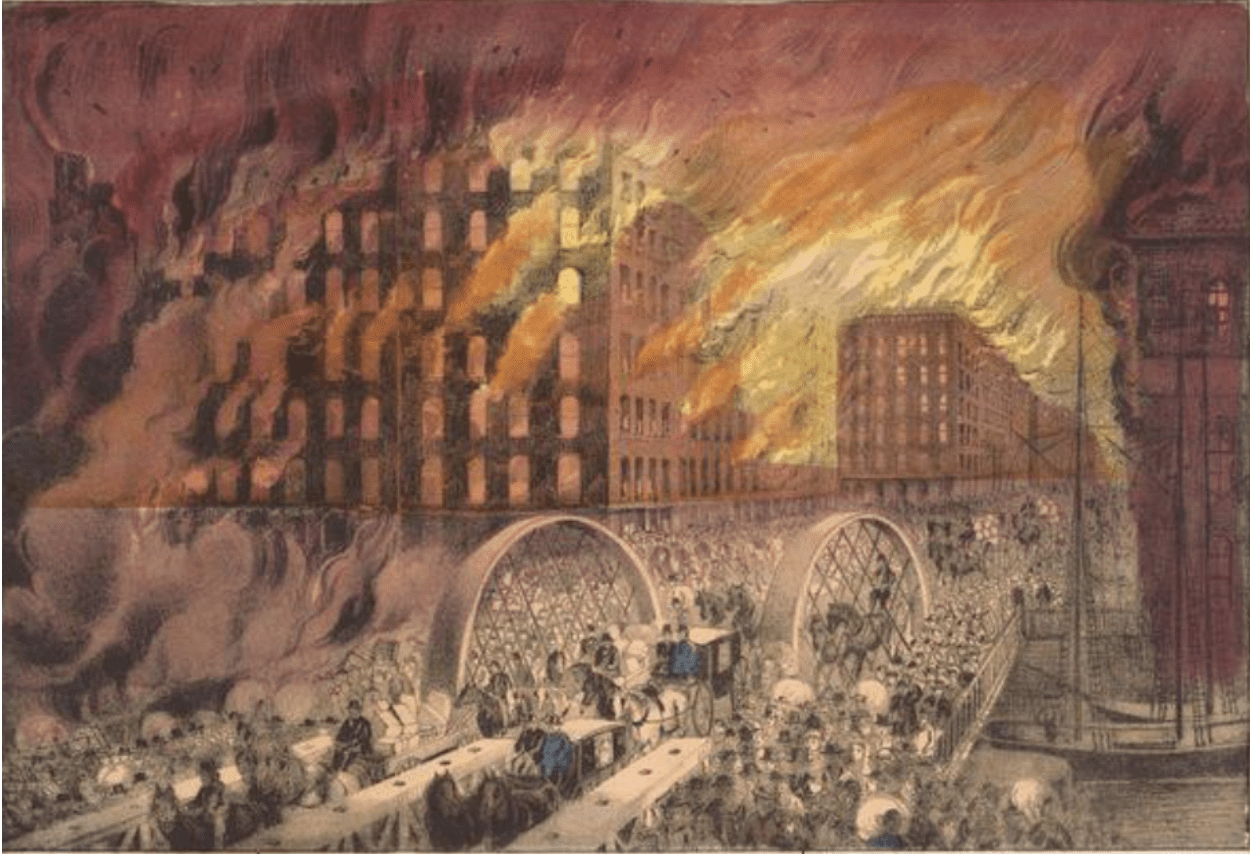
Most people have heard stories or tales about Chicago’s Great Fire that occurred from October 8 until October 10 1871. As many may or may not know, the legend has it that a cow had kicked over a lantern in a barn located on the city’s southwest side, which then started the fire.
The owner of said cow was Catherine O’Leary, a name that has unfortunately been attached to the fire throughout history. The O’Leary cow and farm was made infamous after the fire. It even inspired songs and nursery rhymes that were recited for years. Since then, historians have moved to stop using the name with the fire as it allowed the focus and blame to land on this single cow when the fire was so much more than that to this great city.
Now you might be wondering how does a small lantern cause over $200 million in damages? In October 1871 Chicago was experiencing one of its driest seasons, and with much of the city’s buildings, streets, and sidewalks being made of wood, Chicago was very vulnerable. Of course, compared to Chicago today and most cities around the country having little to no buildings or large areas constructed of wood to help avoid this very problem.
Starting on DeKoven street, the fire started and rapidly spread, catching any buildings near it on fire, and continued to move north and east toward the hub of Chicago. The lack of firefighting equipment available at the time also had a large influence on how big the fire would get. With paintings and stories depicting firefights passing buckets of water down a line for hours.
Despite the best efforts of the Chicago firemen the fire raged on for more than two days until October 10 when a much needed rain came to help. Although the fire had stopped the worst was yet to come for the budding city. It was estimated that over 300 people perished and left an additional 100,000 homeless. This was a result of more than 17,000 buildings and homes being damaged and destroyed.
The aftermath of the fire was surely just as bad as the fire itself. With many dead and homeless, an outbreak of chaos ensued with those who lost their homes turning to looting and rioting. The effect of the fire was devastating on the spirit of Chicago, a city which previously was on the rise to being one of the largest in the country.
As the city stress rose and anger from its citizens did too, martial law was declared and on October 11 the chaos was put to an end. The order for martial law was lifted nearly 3 weeks later.
The city seemed to learn from its mistakes and quickly started making efforts to prevent this kind of disaster from happening again. Much of which is thanks to the Mayor of Chicago who was elected a month after the fire. Joseph Medill promised to implement stricter fire and building codes. He focused his efforts on promising a safer city.
Although Medill had good intentions many believe the reason for his win has to do with a large number of votes being destroyed during the fire, yet due to the significance of the event it seems as if whoever had been elected would have changed the city. Some of the structures that did survive the fire have become landmarks of the city.
Most notably being the Old Water Tower which has become a major tourist attraction on the Magnificent Mile. As well as Chicago’s famous transportation system the “EL”. Reconstruction of the city’s infrastructure started almost immediately and had an immense positive effect on the city both economically and physically.
